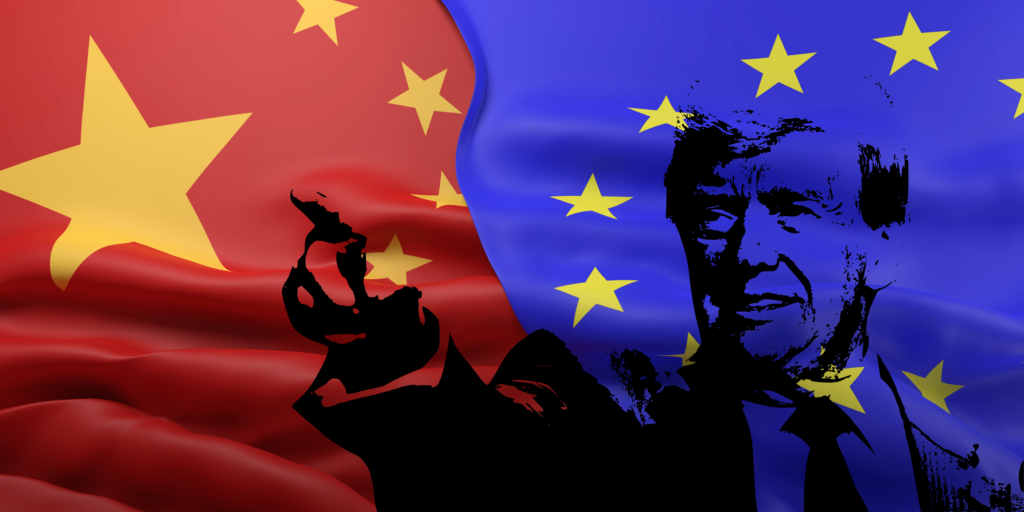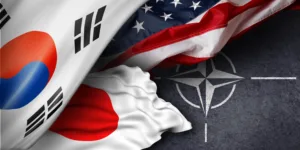As the reliability of the transatlantic alliance comes into question, the EU struggles to define a unified strategy, caught between economic opportunities and growing security concerns about China. This uncertainty leaves the EU vulnerable to both external pressures and internal divisions.
Key takeaways:
-
The EU’s approach to cooperation with China has been inconsistent, which has been further amplified by the divisions exposed by the rift with the US.
-
While some member states, such as Spain, Hungary, or Slovakia, argue for increased cooperation with China, France, the Netherlands, and potentially the incoming Merz government in Germany, caution against dependence.
-
Recognizing divisions within the transatlantic partnership, China is making strategic overtures to the EU.
The EU caught between the US and China
President Trump’s “America First” policies have introduced tariffs against allies and foes alike. In addition to trade restrictions and tariffs already put in place by former President Joe Biden and during Trump’s first term, Trump added 10% tariffs on all Chinese imports shortly after returning to the White House. A month later, the US imposed another 10% tariffs on China leading to retaliatory measures from Beijing and further escalating the ongoing trade war. The second round also included 25% tariffs on EU steel and aluminum. Finally, as part of the “Liberation Day“ round of universal tariffs, Washington announced an additional 34% tariff on imports from China and 20% on imports from the EU. While most of the planned tariffs, including on the EU, were put on hold on April 9, the additional tariffs on China reached the total tally of 125%.
However, the trade war is only one part of a broader transatlantic drift. Washington’s questioning of security guarantees to Europe through NATO and its desire to bring an end to the Ukraine conflict over the heads of Europeans and Ukrainians have damaged confidence in the future of the transatlantic alliance. This has also led European leaders to reassess their strategic options.
Over the past three years, the EU has pursued a de-risking policy towards China and has increased its coordination with the US on the issue. However, in light of the deterioration of ties with Washington, EU leaders are sending mixed messages toward future cooperation with Beijing. While some governments have voiced their intentions toward increased cooperation with China, others have cautioned against developing further dependencies on adversarial powers. At the same time, China is trying to take the opportunity to warm up relations with the EU, marred by trade spats and political tensions in the past few years.
European Commission’s inconsistency
Reflecting the EU’s complex stance on China as a partner, economic competitor, and systemic rival, European Commission President Ursula Von der Leyen has advocated for a “de-risking” policy to reduce dependencies, particularly concerning China’s influence. This approach, coupled with China’s support for Russia’s war effort, has contributed to a deterioration in EU-China relations over the past three years. While the EU has cautiously navigated its relationship with China, the influence of the US is evident in the EU’s evolving perspective, which initially focused primarily on economic partnership. Following her reelection as Commission President in December 2024, von der Leyen threatened to utilize “full use of our trade instruments if Beijing keeps flooding Europe with subsidized exports,” responding to the surge of cheaper Chinese goods into EU markets. During a meeting in Washington D.C. in late February, the European Commissioner for Trade and Economic Security, Maros Šefčovič, emphasized transatlantic unity on China policy, highlighting the shared concern over “nonmarket practices” and “overcapacities.”
Times might be changing, however. During a January speech at the World Economic Forum in Davos, Switzerland, von der Leyen expressed the EU’s openness to improving relations with China, calling for constructive engagement to find mutually beneficial solutions to Chinese overcapacity and trade imbalances. In February, echoing her Davos statements, Von der Leyen told EU ambassadors that the EU would continue “de-risking our economic relationship” while seeking opportunities for constructive engagement and expanded trade and investment ties with China. During Šefčovič’s visit to Beijing at the end of March, trade issues and imbalances seemingly became secondary to both sides’ agreement to deepen trade and investment ties.
It is not just the Commission that seems to be reconsidering its approach to China. In March, the European Parliament removed restrictions on Members’ meetings with certain Chinese counterparts.
However, the EU concerns regarding unfair trade practices and economic security are not going anywhere, resulting in a complex and sometimes contradictory approach. The EU is preparing for a potential influx of Chinese goods due to US tariffs on China, with Brussels developing an “overcapacity instrument” to prevent such an occurrence. Furthermore, EU institutions are set to introduce new investment screening proposals in the coming months, granting the Commission the power to veto transactions deemed a threat to European economic security.
In effect, the EU’s policy toward China is inconsistent. Efforts to build a closer relationship with Beijing are often contrasted with hawkish rhetoric and actions from key officials. Whether the US remains a partner in forging a joint response to China is unclear to everybody in Brussels.
Member states in disarray
The conflicting statements by the Commission do not provide clear guidelines for the member states, who have already had a fragmented approach to China policy, each following its own path in managing relations with China. Certain EU governments interpret the new US administration’s recent moves as signs of a potential abandonment of Europe. Facing current headwinds, there are calls to boost cooperation with China, particularly in trade and investment.
In February, Ireland welcomed Chinese Foreign Minister Wang Yi and Tánaiste (deputy prime minister) Simon Harris reiterated Ireland’s commitment to fostering close economic ties with amid already booming Sino-Irish relations . The current prime minister and the president of Croatia have both leaned favorably in the past toward Chinese economic cooperation and recently, the current government approved a large highway tender to China’s Road and Bridge Corporation.” Under the current governments, Slovakia and Hungary will continue to lean friendly toward Beijing (and Moscow). Last but not least, Prime Minister Pedro Sanchez of Spain is planning a visit to Beijing soon, the first such visit of an European leader since the recent trade war outbreak.
On the other hand, France and the Netherlands are leaning toward skepticism. The Netherlands issued an 11-page memo to the European Parliament that concluded that China (alongside Russia) represents “the greatest threat to the security of the Netherlands.” The Netherlands has likewise continued to expand export controls on advanced semiconductor manufacturing equipment despite pressure from China and has urged other member states to stick together on matters concerning China. Meanwhile, France’s top diplomatic advisor has informed China that “any diversion of Chinese exports from the United States to Europe would be met with a forceful response.” Moreover, there is growing support from the French government for the EU to handle Chinese overcapacities within the union.
With the new conservative leadership under Chancellor Friedrich Merz, Germany is also expected to take a more skeptical view of China. However, given Germany’s stagnating economy, intertwined supply chains, and automotive industry’s dependence on China, it is difficult to predict which direction Germany will take.
This spectrum of views underscores the lack of a unified EU approach towards China, with individual member states pursuing their national interests.
China’s opportunity?
During the Munich Security Conference in February, foreign minister Wang Yi emphasized the importance of the EU joining the negotiations over the Ukraine War (unlike Trump) and used the opportunity to call for the EU to “deepen strategic communication and mutually beneficial cooperation” with Beijing. Likewise, Lu Shaye, former Chinese Ambassador to France and current special representative for European Affairs, has claimed to be “shocked” over how Trump has treated America’s closest allies and emphasized “China’s diplomatic approach toward peace, friendship, goodwill, and win-win cooperation.” This statement is in stark contrast to his record as a “wolf warrior” while serving as Ambassador to France, but shows how China has been seeking to take advantage of the moment.
Another example of China’s charm offensive was the February AI Action Summit in France. While the US and UK declined to support the Paris AI summit declaration, China readily endorsed the initiative, viewing it as an opportunity to strengthen ties with the EU. China’s willingness to engage with the EU, especially where the US is absent, allows it to increase its influence and build stronger relationships.
Future outlook
The nascent transatlantic drift is driving the EU into disarray. However, it appears likely that Brussels and other European capitals will lean towards embracing French President Emmanual Macron’s vision of the EU’s ‘Strategic Autonomy,’ which highlights independence from the US.
With the EU preparing for China to redirect its exports toward the EU market, EU leaders’ statements on the future of EU-China economic relations remain conflicting. However, their actions in preparing for new investment screening and economic coercion instruments indicate the EU will try to prevent the flood of cheap Chinese goods and predatory investment practices.
China is expected to gently court the EU while observing events shaping new transatlantic ties and continue its usual policy of targeting individual member states for trade and investment. At the same time, it is unlikely to make concessions to the EU. Ultimately, the future of EU-China relations will depend on the EU’s ability to forge a unified approach that balances its economic interests with its security concerns while also navigating the complexities of the evolving transatlantic relationship.







